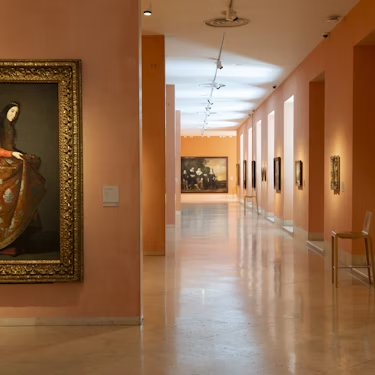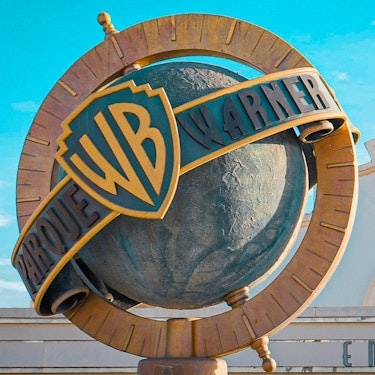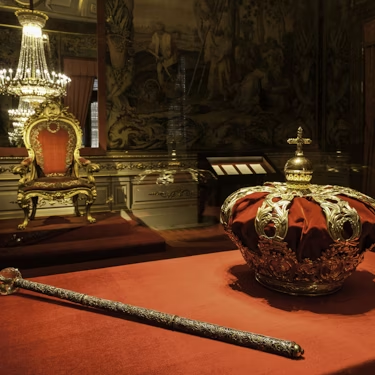More about: Madrid in 5 Days: tips, what to see, and much more
It is possible that 5 days may seem like a long time to stay in Madrid. However, it is a perfect stay to see everything at your leisure and also allows you to make a couple of excursions to see some nearby places of great historical and artistic interest.
To get the most out of your stay I have prepared an itinerary with the most interesting sites, from monuments to palaces, not forgetting its parks and squares. You just have to let yourself go and try to make the most of it.
Day 1: Get to know the Hapsburg Madrid
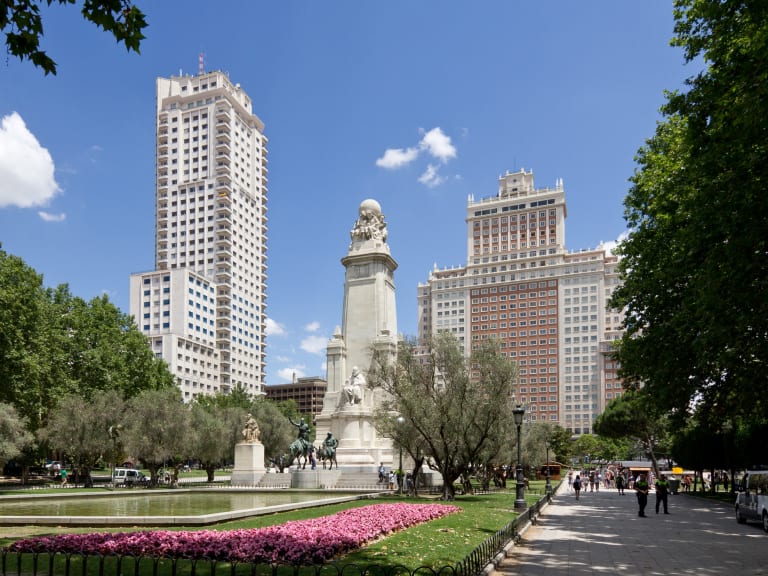
Nothing better than starting the trip with a tour of the area known as Madrid de los Austrias, the oldest and most traditional part of the city. As the historical center of the city, its streets are full of essential attractions, so I recommend that you walk calmly while you look at each of its corners.
One option for this tour is to hire one of the organized tours that run through the center of Madrid This way, not only will you be sure to get to each site without getting lost or wasting time, but you will also receive interesting information about what you are seeing.
Another possibility is to make use of some of the tourist buses in Madrid. With them you can get on and off whenever you want and it is an excellent way to get a first impression of the city and then complete the visits at your own pace.
Start the tour in Plaza de España
The itinerary begins in the Plaza de España, where you can easily reach by metro. From this place you will be able to see the beginning (or end) of the Gran Vía, one of the most important streets of the capital.
In the square itself you will be able to see the Monument to Cervantes, as well as two interesting fountains. There you will also find the Parish of Santa Teresa and San José, a beautiful neo-Gothic temple.
If you want to start the day visiting some interior, in this square you can enter two floors of the Palace of Godoy, a very important place in the history of Madrid and the whole country. Finally, the Plaza de España is flanked by two of the most emblematic skyscrapers of the city: the Torre de Madrid and the Edificio España (currently the hotel Riu Plaza España).
See the Teatro Real
Right next to the square is the Teatro Real, the main reference of opera in the country. Built in 1850, its latest remodeling has provided it with a capacity for more than 1,700 spectators.
If you have the opportunity, the best way to get to know its interior is to attend a performance, but if you can't or are not interested, it is also possible to hire a guided tour.
Enter to see the Almudena Cathedral
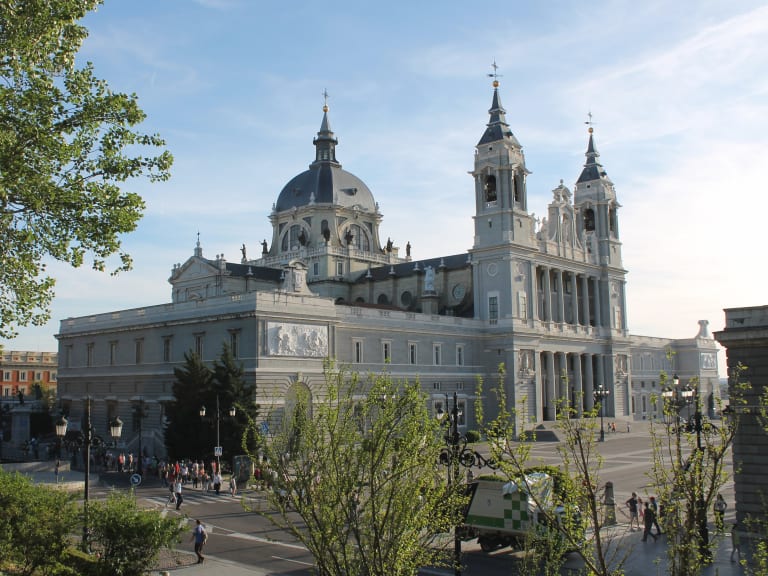
The most important church in Madrid can be visited without having to pay any entrance fee. Its turbulent history, with several changes of project, has made its style quite eclectic and undefined, but still worth a visit.
In its interior highlights the altar of Santa Maria la Real de la Almudena, the Baptistery, the colorful stained glass windows and, above all, the crypt.
In the guided tour of the Almudena Cathedral you can also enter a museum that houses important religious and historical objects (the entrance fee is about 6 € and includes the ascent to the dome).
Don't miss a visit to the Royal Palace
A visit to the Royal Palace of Madrid is almost essential when traveling to Madrid. Along with the nearby Sabatini Gardens (which you should not miss either), is one of the most important historical sites of the capital.
Before entering, take a look at the statues representing the Visigoth kings exposed in the square where the palace is.
As for the visit to the palace, it is best that you hire a guided tour or, failing that, buy a ticket without queues. Inside, as you can read in this article, you will be able to see several rooms of great interest, such as the official rooms, the Royal Armory or the Royal Pharmacy.
The Plaza Mayor, the nerve center of historic Madrid
After finishing the visit to the Royal Palace you should head to the Calle Mayor, which leads to the most famous place in historic Madrid: the Plaza Mayor. This large square is characterized by the atmosphere that you will always find in it. In its arcades restaurants coexist with stalls selling stamps and other items and I recommend that you walk around its perimeter with tranquility.
The square also has a large number of historic buildings (such as the Casa de la Panadería), with several arches of great beauty (such as Cuchilleros) and a statue of Philip II located in its center.
If you want to do something really typical, you can eat in one of the locals of the square one of its famous squid sandwiches. In case you prefer something else, the next point of the tour will satisfy your culinary tastes.
Have a bite to eat at the San Miguel Market
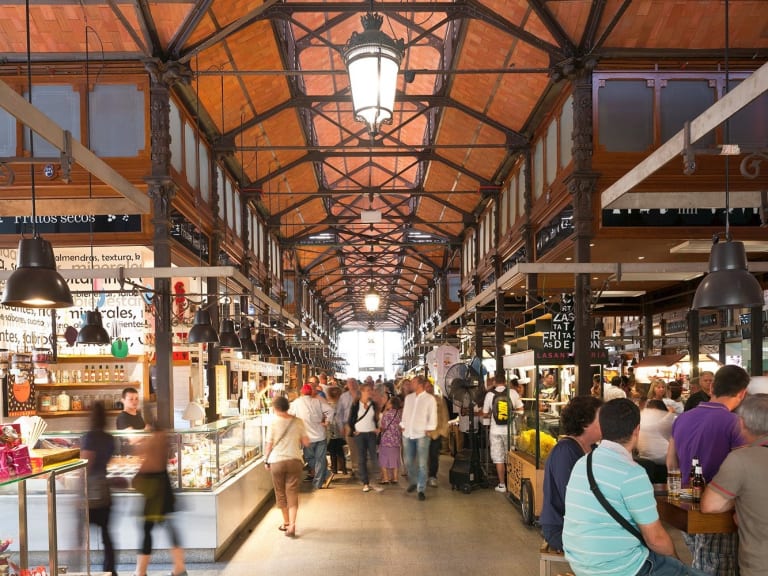
Near the Plaza Mayor you will find what was the first gastronomic market in the city, the San Miguel Market. If you have not been able to make a tour of tapas and wine in Madrid, here you will find some of the most typical, as well as more modern elaborations.
The market is characterized by receiving high quality ingredients from all corners of the country. Once there, the dishes made with them are offered in its more than 60 stalls.
Feel at the center of the country in Puerta del Sol.
I hope you have saved some room for dessert, because leaving the Plaza Mayor towards Puerta del Sol I suggest you make a stop at the San Ginés chocolate shop, one of the most traditional in the city. Although its star dish is churros with chocolate, you can always try some of their other specialties.
Then it's time to continue your walk along the Calle Mayor. Walking calmly, you will reach one of the most famous places in Madrid, if only for appearing on television every December 31 in the broadcast of the chimes that welcome the new year.
In the always crowded Puerta del Sol, you can see the plaque that marks it as the kilometer 0 of the country's roads, as well as another element that has become one of the best known of the capital: the Tio Pepe ad. Of course, there is also the statue of the Bear and the Strawberry Tree, one of the symbols of the city. From Puerta del Sol you can access Preciados street, full of stores.
End the day on Gran Vía
The last destination of this first day is the Gran Vía, one of the most important avenues of Madrid. On this street you will see two well-known buildings, the Metrópolis and the Edificio Carrión, at the top of which there is a famous Schweppes sign.
However, what characterizes this street is its atmosphere. It is lined with restaurants, stores, cinemas and theaters. In fact, in recent years it has been nicknamed the Broadway of Madrid.
My suggestion is that, after touring this artery, you should go to one of the shows that are usually performed in its theaters. The most successful, at least in the last decade, are the musicals and I am sure you will find one that you like. At the end of the show, you just have to look for a place to have dinner and retire to rest to have strength for the next day.
Day 2: Museums and parks
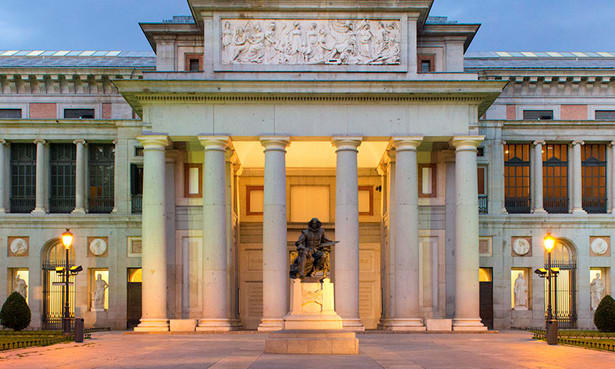
The second day in Madrid will be, in principle, less busy than the first. This does not mean that it will be less interesting or tiring, as it will begin with visits to two of the most important museums in the country. Then, in a more relaxed way, you can visit one of the most famous parks in the city.
Joaquín's Traveller Tip
A very good option to save money to enter the Prado and the Reina Sofia is to get a joint ticket that includes guided visits to both museums.
The wonders of the Prado Museum
Visiting the Prado Museum is a must when traveling to Madrid. Not in vain is it one of the most important museums in the world, as evidenced by the list of the best paintings housed in its facilities.
My recommendation is that you book your ticket to the Prado Museum as soon as possible. Although you can do it perfectly on your own, you can also consider booking a guided tour to have a guide to take you to the most interesting areas and explain the works will allow you to save time and, above all, enjoy the visit much more.
At the end of your visit, which will not go under two and a half hours (if you go fast), I recommend that you go to the Prado Museum store and then recover some strength in a nearby cafe.
Reina Sofia Museum, another of Madrid's great museums.
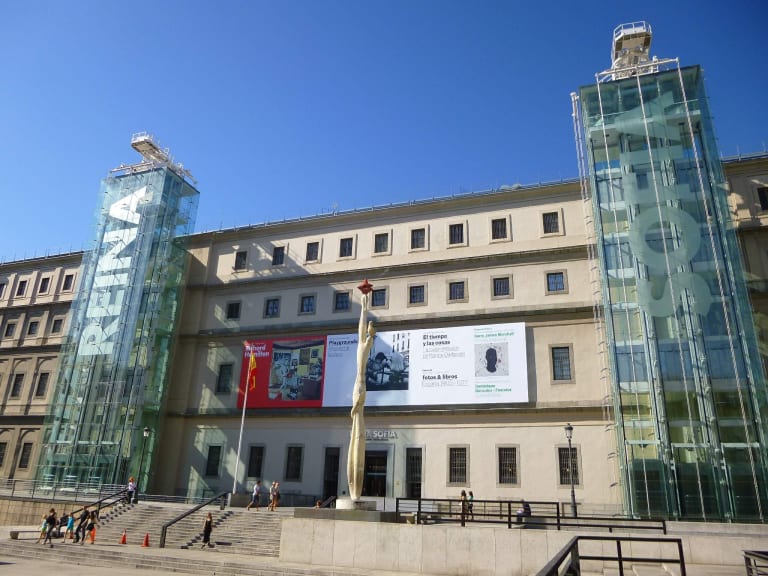
On the same street as the Prado is another of the most important museums in Madrid. With a visit to the Reina Sofia you will be able to see one of the largest collections of contemporary art in the world, with works by painters such as Picasso, Dali and Miró.
To see the best works of the Reina Sofia museum I recommend two options: buy tickets without queues (if you want to see it on your own) or hire a guided tour to have the explanations of an expert.
Lunch and walk to Cibeles
The next thing to do on this day will be to look for restaurants near the Prado Museum to have something to eat and relax from the busy morning. When you finish, you can walk along the Paseo del Prado in the direction of Cibeles. On the way you will see the Neptune Fountain and the spectacular Ritz Hotel.
Already in the Plaza de Cibeles you will be able to see the fountain with the statue of the Roman goddess that gives it its name. In the same area you can also see the building of the Bank of Spain and the palace of Cibeles.
The latter building houses a great viewpoint with good views of the capital, as well as a bar on its terrace from which you can admire almost the same panoramic view. The entrance to the viewpoint costs about 3€, while the drinks at the terrace bar will be much more expensive (about 6€ for a beer, for example).
Relaxing afternoon at the Retiro
The Retiro Park is the great green lung of Madrid and its 135 hectares are full of secrets to discover and street artists to enjoy. This large garden was opened in 1868 and attracts numerous tourists and locals every day. A good way to see the park is by bicycle, but you can also choose to walk its paths at your leisure or book a tour of the Retiro.
Among the places you can not miss are the pond, theCrystal Palace, the monument to Alfonso XII, the Paseo de la Argentina, the Astronomical Observatory or the door of Felipe IV.
Likewise, you can not go to the Retiro and not stroll through the gardens of the Parterre, full of exotic trees.
See the Puerta de Alcalá
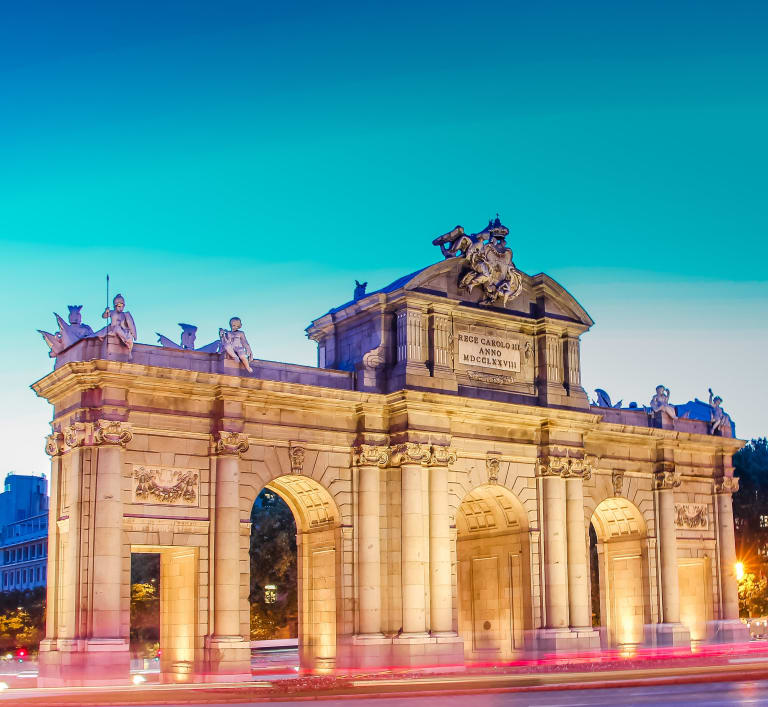
To leave the Retiro you should look for the exit closest to the Plaza de la Independencia. There you will find one of the five royal gates through which the city of Madrid was entered: the Puerta de Alcalá.
This triumphal arch has become a symbol of the city and was built during the reign of Carlos III, nicknamed "the best mayor of Madrid" for his contribution to turn the city into a great city.
Dinner in the Chamberí neighborhood
To get to the next point of the tour, the neighborhood of Chamberí, you can take a long walk or, more comfortable, use the metro line 2. If you have time, since it closes at 8 pm, it is very interesting to enter the museum created in the old Chamberí subway station. This was closed in 1966, but was later restored and opened so that the public could learn what this transport was like in the early twentieth century.
Another interesting building is the Fire Station No. 1, the oldest in the city. It is worth taking a look at its neo-Mudejar style façade built at the beginning of the last century. Likewise, you should not miss the palace of Maudes. This was once a hospital for day laborers and today is the headquarters of the Department of Transport of the community.
When you start to get hungry you just have to choose from one of the many restaurants in the neighborhood, such as Lacabia (c/ Alonso Cano, 84), Bizikletak (c/ Gaztambide) or ToriKey (c/ Rios Rosas).
3. Day Trip Day trip to Toledo and Segovia
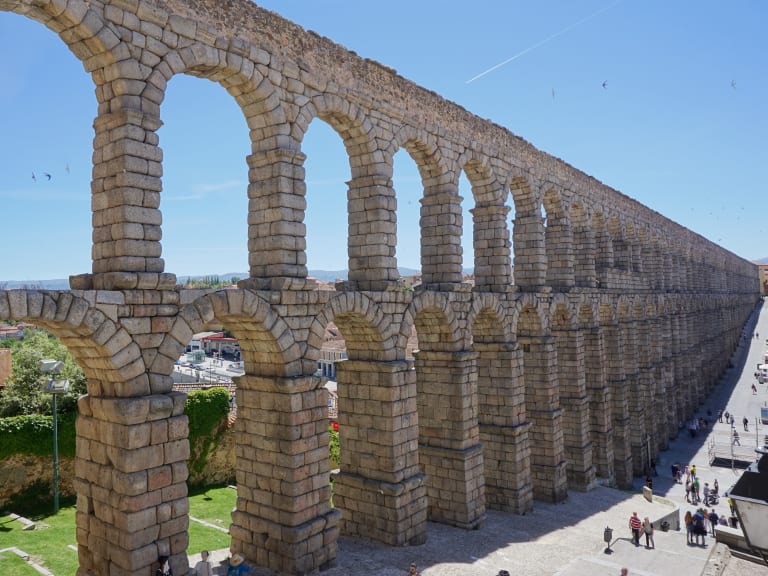
One of the great attractions of Madrid is its proximity and good communications with some cities of great beauty. For this third day I suggest that you take advantage of this advantage to make an excursion to Toledo, World Heritage Site by Unesco; book an excursion to Segovia, with all its great monuments, or you can even opt for the combo and choose to hire a tour to Toledo, Avila and Segovia from Madrid
The old town of Toledo
The tour of this beautiful city usually begins in the Plaza de Zocodover, the ideal place to start strolling through the narrow streets of its historic center. In total, it will take about 3 hours to visit the attractions of the city of El Greco.
Accompanied by a guide who will explain the history of each of the corners of the city, then continue to the Primate Cathedral, which you can enter on your own during the free time you will have at the end of the itinerary.
Discover the secrets of Segovia
With a wall of 2,516 meters, 2,500 battlements and 87 towers, the city of Segovia is one of the most beautiful in the whole country. With this tour you will have 3 hours to visit it accompanied by an expert guide.
Its Gothic cathedral was built in the mid-sixteenth century and is one of the essential visits for all who come to this city. The same goes for the fantastic medieval Alcazar, declared a World Heritage Site by UNESCO and whose tickets are included in the price of the tour.
The most famous monument of the city is, without a doubt, its splendid aqueduct which, of course, is also part of this tour.
4. Day Excursion to El Escorial and afternoon at Casa de Campo

For the fourth day of your stay in Madrid, my advice is to make a half-day visit to the nearby El Escorial Monastery. Later, you can enjoy a quiet afternoon in the Casa de Campo, a perfect place to spend a few hours if you have gone to Madrid with children.
El Escorial Monastery: the eighth wonder of the world
If you want to make a guided visit to El Escorial, the most convenient is to hire one of the tours that depart from the capital and not worry about buying tickets and other practical aspects. In addition, you will have the advantage of going with an expert guide who will guide you and explain the history during the visit.
The monastery, actually a monumental complex, was built to commemorate the Spanish victory in the battle of San Quintín and to serve as a burial place for the Spanish kings. Its enormous extension was also an attempt to make it a symbol of the power of Spain at that time.
The visit, which lasts about two hours, includes the Mausoleum of the Kings and Princes, the Chapter House, the basilica and the palace.
Remember the horror of the war in the Valley of the Fallen
Before returning to Madrid, this tour usually includes a visit to the Valley of the Fallen from Madrid, located 9 kilometers from El Escorial.
This place was built by the Franco regime with the intention that it would serve as a tribute to the dead of the Spanish Civil War. Although controversial, the visit can help you to learn more about the historical moment in which it was built and its symbolism.
Casa de Campo

Back in Madrid, the itinerary will continue through another of the great green areas of the city: the Casa de Campo. To get to this great park there is no better way than by funicular. This means of transport, which departs from the station of Paseo Pintor Rosales, runs 2.5 kilometers in eleven minutes and will allow you to enjoy the beautiful scenery of this area of the capital from the heights.
The Casa de Campo was built, like many other parks, to serve as a place of recreation for the monarchy. Today, all its attractions have turned it into an area where many families spend their holidays, while tourists enjoy all that can be seen and done there. One of the great attractions is its artificial lake. If you feel like it, you can rent a boat for a quiet stroll or, for the more sporty, get into a canoe and paddle for a while.
Next to the lake is an entomological center that will delight nature lovers with its more than 15,000 specimens of different types of butterflies and beetles. Another popular place, especially for those who go with children, is the Madrid Zoo, although it may not get more visitors than the Parque de Atracciones located nearby.
Contemplate the sunset from the Temple of Debod
Back to the Paseo del Pintor Rosales you still have one last point to visit. Nearby is the Temple of Debod, an authentic Egyptian temple given to Spain in gratitude for its help in moving Abu Simbel.
In addition to contemplating the temple, I recommend you go to the nearby viewpoint to see the sunset from there, as the views are well worth it.
Later, you just have to return to the area of your hotel and look along the way somewhere to dine before retiring to rest.
Day 5: from the Bernabéu to remember the movida madrileña (Madrid's nightlife)
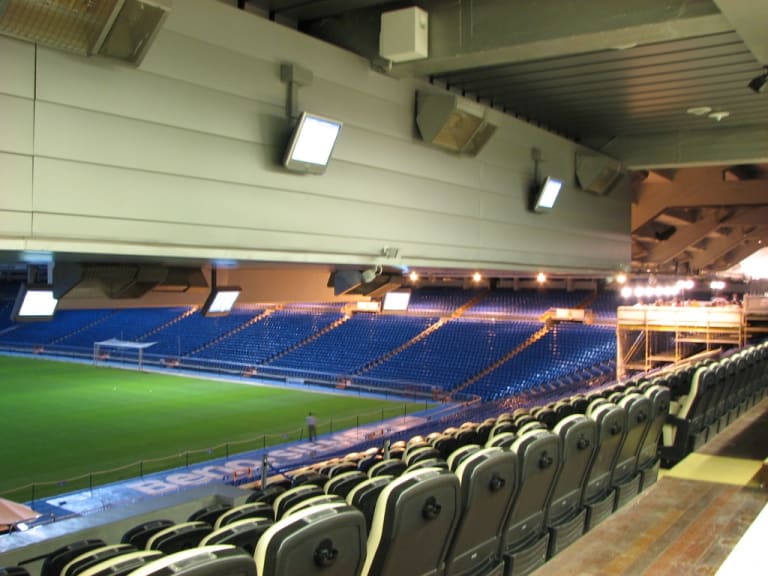
As you have seen, Madrid offers many plans and, to end the stay in Madrid, I have booked some visits that start in the most modern area of the capital.
At the end of the day, nothing better than experiencing some of Madrid' s vibrant nightlife in the area where the famous Movida was born.
If you are a soccer fan, don't miss a visit to the Santiago Bernabeu stadium
Although if you do not like soccer you can change this visit for any other that you feel like, the success of the tour of the Bernabeu is demonstrated by its status as the third most visited museum in the city.
This advises you to book the visit in advance to avoid queues before entering. The tour includes exhibits on the history of the club, as well as access to the dressing rooms, the dugouts and the presidential box, among other things.
The modernity of Plaza Castilla
Leaving the stadium you will find one of the most modern areas of the city. On your walk you will reach the Plaza de Castilla, surrounded by several of the most imposing skyscrapers in Madrid. Undoubtedly, the most famous buildings are the so-called Kio Towers, with their characteristic inclination.
In the square you will also find a monument built during the Franco regime that follows in part the rules of the typical architecture of fascism.
Nearby is an obelisk designed by Santiago Calatrava, as well as a large cultural exhibition center located in an old subway water tank.
Experience the atmosphere of the Chueca neighborhood

To get to the next point of the itinerary it is best to take metro line 1 to the Tribunal stop. Just a few minutes away is the Chueca neighborhood, one of the liveliest in the city.
The streets of this modern and commercial neighborhood are always full of life. Before walking through it you can go to the Mercado de San Antón, where you will find numerous food stalls distributed over its three floors.
The neighborhood, known for the glamour of its stores and cafes, is not lacking in some historic buildings that are worth seeing while strolling through its streets. Although you are sure to find more, here are some of the most interesting ones:
- Museum of Romanticism: located inside a palace, this museum houses more than two thousand items from the nineteenth century. A good plan is to sit for a while in its cafeteria while you listen to the water falling from the fountain located in the inner courtyard.
- Museum of the History of Madrid: although it is not too well known, this museum located in a former baroque-style hospice is perfect for those who want to delve into the history of the city.
- Church of San Antón: in Hortaleza street you can see this interesting baroque church.
- La casa de las 7 chimeneas: the building is considered one of the best examples of 16th century architecture in Madrid. Located in the Plaza del Rey, the legends about it are almost as interesting as its own aesthetics. One of them, for example, states that the 7 chimneys that give it its name are a representation of the seven deadly sins, while another story claims that an illegitimate daughter of Philip II was imprisoned there and that her spirit still wanders its corridors.
Finish your visit to Madrid with one last tour
A stroll down Fuencarral Street, one of the most commercial streets in Madrid, can be useful to do some last minute shopping. It highlights the youth fashion stores, which makes the street has a great atmosphere throughout the day.
When night falls I recommend you to live a little night in Madrid. One option is to go to the area around the Plaza Dos de Mayo, in Malasaña.
This area, considered one of the cradles of the popular Movida Madrileña of the 80s, is full of pubs and bars for all tastes. In many of them you will be able to enjoy live performances.




